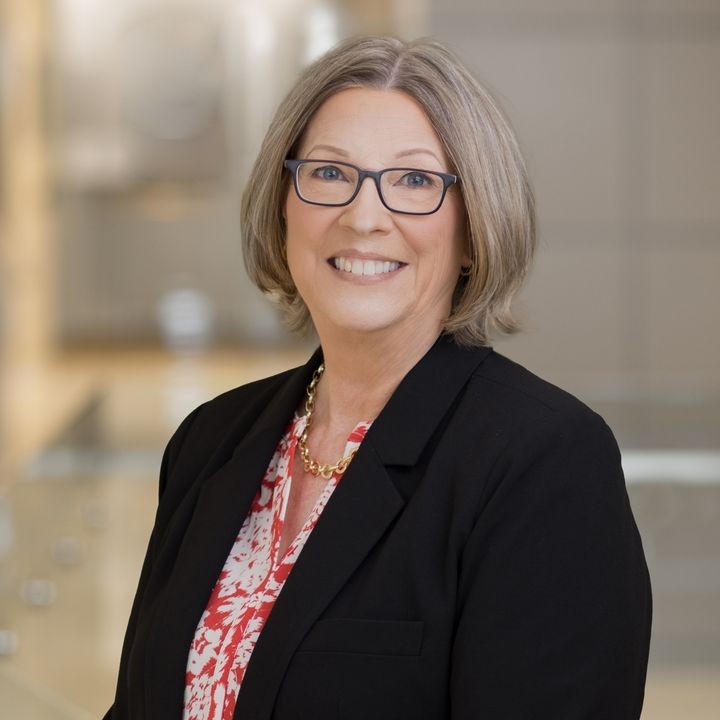Natural Disasters – Dealing with the New Normal
Publication | 02.28.18
[ARTICLE PDF]
More than 50 inches of rain in five days in Houston. The first mass evacuation of the Florida Keys in decades. Puerto Rico’s electric grid essentially destroyed, with at least a year until full power will be restored. With millions of people affected and hundreds of lives lost, the full damage is still being tallied, and the financial cost is now estimated in the hundreds of billions of dollars.
The devastating hurricanes in 2017—Harvey, Irma, and Maria—on top of the deluge of other major storms in recent years, have raised new questions about whether the U.S. electrical grid is up to the task, given the “new normal” of severe weather.
“It’s a matter of global importance,” says Richard Lehfeldt, a partner in Crowell & Moring’s Energy Group. “The issue is what to do about it. It’s not as if it arose out of nowhere.”
The severity of the threat is daunting. A U.S. Government Accountability Office study found that Superstorm Sandy-like events that once took place every 500 years in 1800 are now occurring every 25 years. Worse yet, by 2045, those superstorms could come once every five years.
That growing hazard prompted the U.S. Department of Energy last year to direct the U.S. Federal Energy Regulatory Commission to examine, among other things, whether the U.S. electrical grid is reliable and resilient enough to address these severe and recurrent stresses to the system, and what resources are needed to strengthen resiliency and respond rapidly to major weather events. While that rulemaking ended early this year, the commission reiterated its commitment to ensuring that the national grid is able “to withstand or recover from disruptive events.”
Several entities share responsibility for monitoring and ensuring the safety and reliability of the grid. The North American Electric Reliability Corporation is designated by FERC to ensure the grid’s reliability. The Department of Homeland Security and the Department of Defense each look at the grid from the perspective of national security. The key questions: What are vital resources and critical energy infrastructure? Which facilities must be capable of operating in a severe weather event, no matter what? And how do we restore resources after an incident?

|
"It’s a matter of global importance. The issue is what to do about it." |
A LOCAL MATTER
Government policymakers can require resilience planning, seek to formally price reliability and resiliency, and offer subsidies to promote preferred behaviors in order to make the grid more reliable. Federal and state regulators can issue specific regulations compelling risk management in the design and management of electrical generation and transmission facilities. But part of the problem is that while safety and reliability are of national importance, the federal government doesn’t have direct control over maintenance of the grid. Currently, most key resources’ choice decisions about what to build and what kind of power generation to have are made by state regulators, through contested regulatory hearings, and not the typical authorization and appropriations process used for most public works projects.
“All of those state-level decisions are then somehow supposed to be integrated and harmonized at the federal level, which doesn’t always happen,” says Lehfeldt. “The questions that are now increasingly being asked by regulators and legislators, at both the state and federal level, pertain to security, reliability, and now the new word ‘resiliency.’ The issue is: What resources do we need now that these extreme weather conditions are becoming the new normal?”
THINKING OUTSIDE THE GRID
One way being considered to protect the grid from severe weather is the establishment of so-called microgrids—full-fledged, miniature utility systems, capable of “islanding” their operations and continuing to function even in the event of a long-term, regional power outage. These can be expensive systems, but cities and states now see an increasing need for microgrids to prepare for outages that can last weeks or even months. The city of Princeton, New Jersey, for example, has one, as does the New York University Manhattan campus. The Princeton microgrid maintained service through the worst of Superstorm Sandy.
Another tactic under consideration rests on the question of whether some retail customers might settle for a reduced level of service, essentially pay- ing less in exchange for agreeing to suffer service interruptions during severe weather disruptions. Such multi-tiered service already exists during power restoration, when utilities triage service calls to ensure that essential customers (hospitals, fire and police departments, food suppliers) return first to full service.

|
"How are we going to pay for the added security or reliability that is necessary because we are no longer talking about a 100-year storm, but about something that occurs more frequently?" |
IS INSURANCE A SOLUTION?
Of course, one of the biggest issues is who should bear the financial burden. “How are we going to pay for the added security or reliability that is necessary because we are no longer talking about a 100-year storm, but about something that occurs more frequently?” asks Laura Foggan, a Crowell & Moring partner and a member of the firm’s Insurance/Reinsurance Group. “Insurance is an important part of the solution. Of course, the higher number of weather events means there are greater losses and increased costs for insurers as well, but insurers can help minimize or prevent loss, as well as spread the financial burden of losses from climate change.”
The insurance industry can play a role in helping prepare for future severe weather because the companies have a tremendous amount of data and knowledge about loss avoidance and prevention, Foggan says. “One of the things insurers can do is partner with government regulators both at the state and federal level to identify and articulate loss-prevention strategies that will benefit society as well as insurers,” she says. Loss prevention or mitigation of physical damage to key infrastructure—such as electrical grids—saves costs of repair, as well as the important downstream costs to private industry and society that result from loss of infrastructure function.
Policymakers must also consider whether government help in financing recovery may promote repetitive losses. Currently, the federal government is the last line of defense for many victims of hurricanes and floods through the National Flood Insurance Program, which provides coverage for about 5 million homes and businesses.
As the costs of hurricanes increase, so do the questions about whether this subsidized insurance is the best solution, because it costs all U.S. taxpayers yet benefits so few homeowners. And Foggan says questions continue to be raised as to whether such pricey, subsidized insurance products in fact incentivize real estate development in geographic areas that are just too high risk to sustain such projects.

|
"Flood Re is a good example of how government can work with the private sector to bring about change that benefits hundreds of thousands of households." |
WHO PAYS FOR DISASTER?If a home or business is built in a known floodplain, should the government have to help pay for the damage when a flood occurs? What role should private insurance companies play? Those are questions that the U.S. Congress is debating as it restructures the National Flood Insurance Program. The NFIP provides subsidized insurance to homes in at-risk flood areas that might not otherwise be able to get coverage. Many countries are struggling with how to handle flood coverage. The U.K. has a new approach to addressing the availability and affordability of private homeowners’ flood coverage through Flood Re, a not-for-profit levy and pool system that is designed to provide affordable insurance to up to a half-million households in high- risk flood areas. The closest thing the U.S. has to this is in Florida, where a law allows private flood insurance. Michelle Linderman, a London-based partner at Crowell & Moring and a member of the firm’s International Trade Group, says that as forward-looking as Flood Re is, it does have its faults. The first is that despite the program’s goal to provide affordable insurance, critics say its policies are still too expensive. Moreover, it is only available to homeowners and not for commercial properties. Finally, it does not provide any means to encourage actions that might reduce future risk from flooding. However, Linderman notes, “despite its shortcomings, Flood Re is a good example of how government can work with the private sector to bring about change that benefits hundreds of thousands of households.” |
Contacts
Insights
Publication | 11.24.25
Litigation Funders Looking to Invest in Law Firms Face Hurdles
Publication | 11.19.25
Who Can Fix It? Antitrust, IP Rights, and the Right to Repair
Publication | 11.14.25
Three Steps Tech Companies Can Take Today To Prepare To Ride A Blue Wave In 2026



